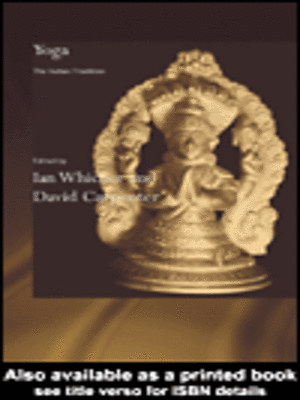
Sign up to save your library
With an OverDrive account, you can save your favorite libraries for at-a-glance information about availability. Find out more about OverDrive accounts.
Find this title in Libby, the library reading app by OverDrive.



Search for a digital library with this title
Title found at these libraries:
| Library Name | Distance |
|---|---|
| Loading... |
The Indian Tradition of yoga, first codified in the Yoga Sutra of Patañjali in the third or fourth century CE, constitutes one of the world's earliest and most influential traditions of spiritual practice. It is a tradition that, by the time of Patañjali, already had an extensive (if obscure) prehistory and one that was to have, after Patañjali, an extraordinarily rich and diverse future. As a tradition, yoga has been far from monolithic. It has embraced a variety of practices and orientations, borrowing from and influencing a vast array of Indic religious traditions down through the centuries.
Recent years have witnessed an increased production in scholarly works on the yoga tradition, which have helped to chart this complex and multifaceted evolution and to demonstrate the important role that it has played in the development of India's religious and philosophical traditions. And yet the popular perception of yoga in the West remains for the most part that of a physical fitness program, largely divorced from its historical and spiritual roots.
The essays collected here provide a sense of the historical emergence of the classical system presented by Patañjali, a careful examination of the key elements, overall character and contemporary relevance of that system (as found in the Yoga Sutra ) and a glimpse of some of the tradition's many important ramifications in later Indian religious history.
Recent years have witnessed an increased production in scholarly works on the yoga tradition, which have helped to chart this complex and multifaceted evolution and to demonstrate the important role that it has played in the development of India's religious and philosophical traditions. And yet the popular perception of yoga in the West remains for the most part that of a physical fitness program, largely divorced from its historical and spiritual roots.
The essays collected here provide a sense of the historical emergence of the classical system presented by Patañjali, a careful examination of the key elements, overall character and contemporary relevance of that system (as found in the Yoga Sutra ) and a glimpse of some of the tradition's many important ramifications in later Indian religious history.







